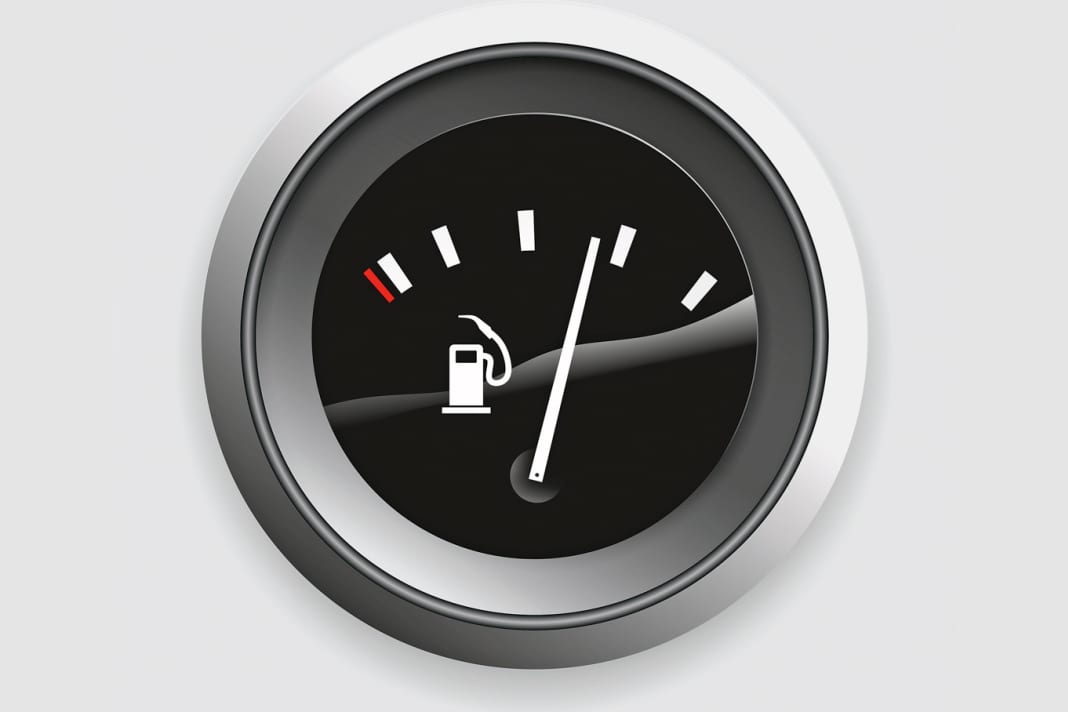





A motorboat needs fuel to sail. To know how much of this precious commodity we have left, a fuel level indicator is essential. Most boats have such a gauge, and hardly anyone is interested in the associated technology, as long as it works. However, if it fails and a replacement has to be procured, you realise how many different technologies there are on the market. Sometimes the fill level is measured using a float, sometimes using ultrasound and without touching. Reason enough for us to take a look at what is available, what can be used for what and why the display oscillates in rough seas. But let's start where the fuel is stored.
Tanks in boats are usually made of stainless steel or plastic. Baffle plates are installed in boat tanks above a certain size. They ensure that the medium, be it grey water or fuel, remains quieter in the tank and does not become an unchecked momentum mass in rough seas or during fast manoeuvres. But if you want to know the fill level of the tanks, you need technology. In the past, the level was measured using a dipstick, nowadays it is measured without even touching the medium, but more on that later. The display ensures that we always have an overview of how much fuel is in the tank or whether the skipper can treat his crew to a shower if the fresh water has not yet been used up.
Tank fill level also depends on sea state
But of course measuring the fill level is not as easy as it sounds: for example, the system reacts sensitively to swell. This can be easily explained with a simple experiment: If you fill a glass of water half full, the sensor on the dial gauge would show half full. If you tilt the glass, the fill level changes. Depending on where the sensor is mounted, it would now show less or more, although the actual fill level remains the same. The same happens in a tank. Some transducers provide different values depending on the heel. If the boat rolls in the waves, it can quickly happen that the gauge swings from empty to full, even though the tank is only half full. Modern gauges measure with delays, which helps to determine the fill level more accurately.
The wider and shallower the tank and the further away from the centre the sensor is mounted, the less accurate the measurement result will be. Tanks whose contents need to be measured as accurately as possible are therefore often built high and narrow. Boat tanks are usually flat and wide, as they would otherwise not fit under the bunks. Precise measurement is therefore only possible in the harbour or in calm anchorages. Under sea conditions, deviations of around 20 per cent are not uncommon. Those who go on day trips will hardly have any problems with this, but if you go on a long voyage, it can be a different story.
On boats, tanks usually have a trapezoidal shape. They are adapted to the shape of the hull to save space. The problem: one centimetre at the highest point of the tank corresponds to more volume than one centimetre at the bottom of the tank. Many owners are familiar with this phenomenon from older cars. It often takes longer for the first quarter on the fuel gauge to be used up, while the last quarter is quickly gone. This cannot be changed with purely analogue measuring devices. With ultrasonic sensors, it is possible to enter the volume of the tank and thus calibrate the display so that when the tank is half full, it really is half full. But now to the different types.
Float
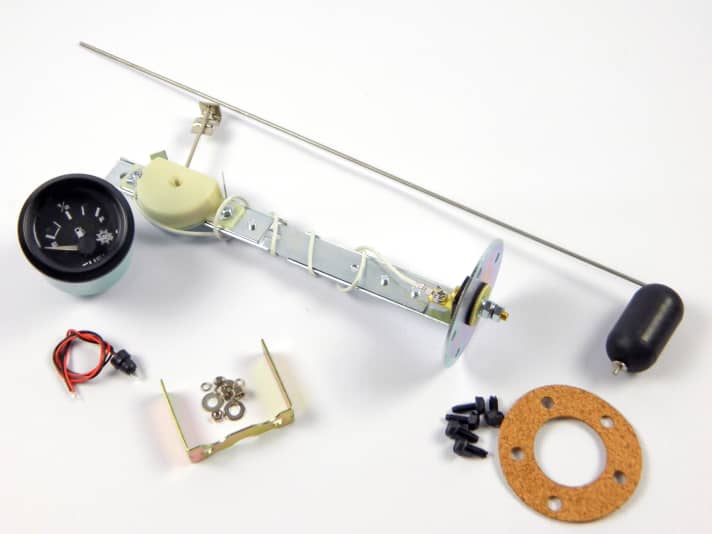
The float is always on the surface of the liquid and thus transmits a signal to the instrument, usually via a variable resistance. If the float continues to rise, the display shows more, if the tank content decreases, the float falls and the display shows less. But there are differences here. When buying, you need to consider what you want to measure. There are sensors for fuel, water or dirty water. The advantage: Pendulum sensors can be adapted comparatively easily to different tank sizes and shapes during installation. Nevertheless, when buying, you should consider how large the sensor needs to be in order to actually reach the bottom of the tank.
Capacitive encoders
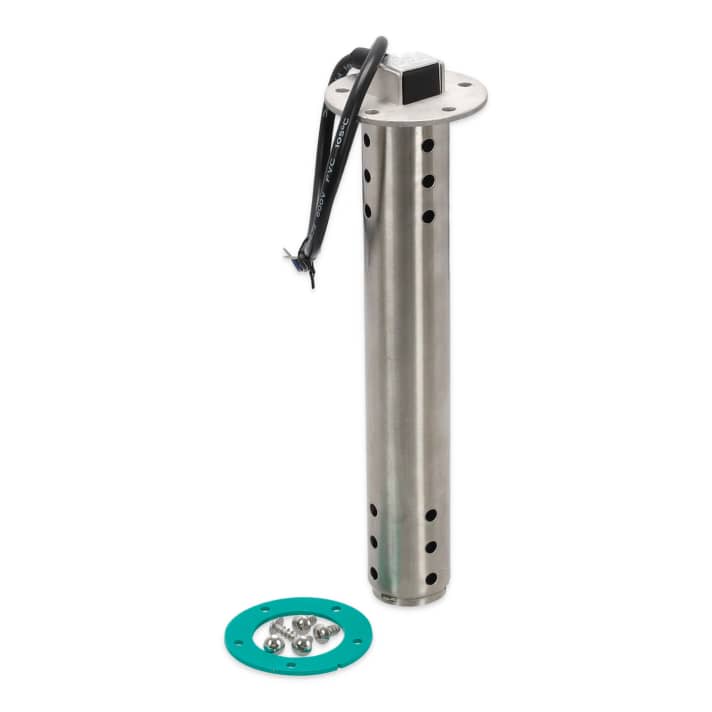
Capacitive level measurement utilises the different conductivity of the filling liquid compared to air. If the probe is in the air, a certain, lower initial capacitance is measured. If the container is filled, the capacitance of the capacitor increases as the probe is covered. The probe electronics then convert the capacitance into an electrical pulse sequence and amplify it. The evaluation electronics in turn calculate the measured value from the pulse rate and thus the fill level. Many of these sensors can be automatically adjusted to the tank depth within a certain range, but these sensors are not suitable for fuels as they are not conductive. Here, too, attention must be paid to the size when purchasing.
Dipstick
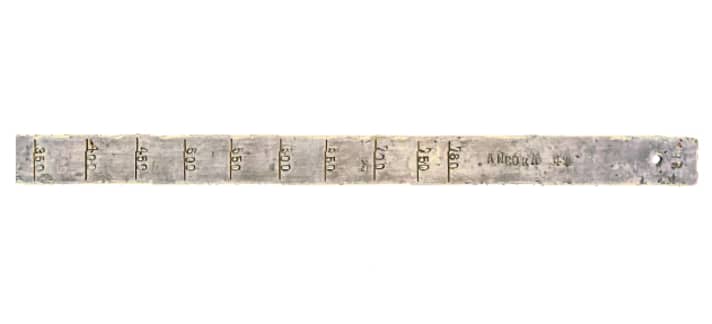
However, the fill level can also be measured without more or less complicated electronics. Plumbed tanks are often found on older boats. A metal or wooden dipstick is inserted into the tank and the level can be read on a scale. To build something like this, the tank is completely emptied and then slowly filled. Depending on how much liquid is required, a line is drawn at a certain level; five or ten litre increments are usually preferred. The principle works with many tank shapes, but it must be ensured that the measurement is always taken at the same position. The boat should move as little as possible to ensure accurate measurement and the tanks must be easily accessible. This system is usually only used for fuel or water tanks. The big advantage: no electricity or complex electronics are required. Dipsticks are also very accurate.
Sight glass
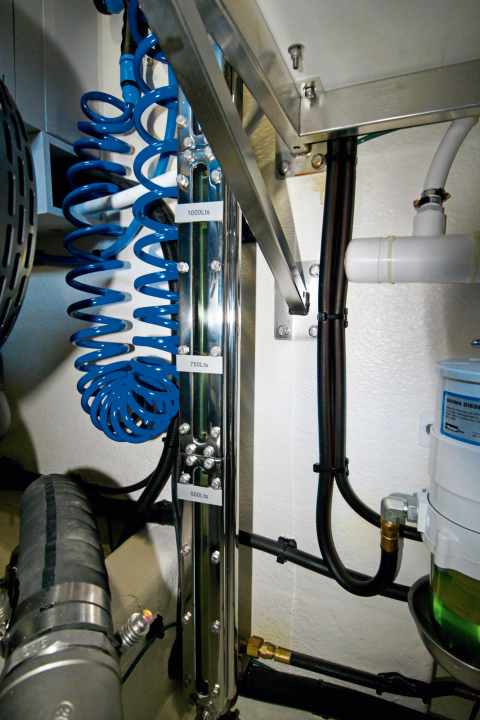
Another way to measure the fill level is to use a transparent tube on the outside of the tank. This method is called a riser tube or sight glass. For this we need two water level fittings, one at the top and one at the bottom of the tank. A transparent, impact-resistant tube is then fitted between them, which then indicates the liquid level in the tank. However, the tank must be fully accessible for this, which is usually not possible on smaller boats due to lack of space. Just as with level measurement using a dipstick, no complex electronics are required here. This technology is usually only used for fuels or fresh water.
Ultrasound
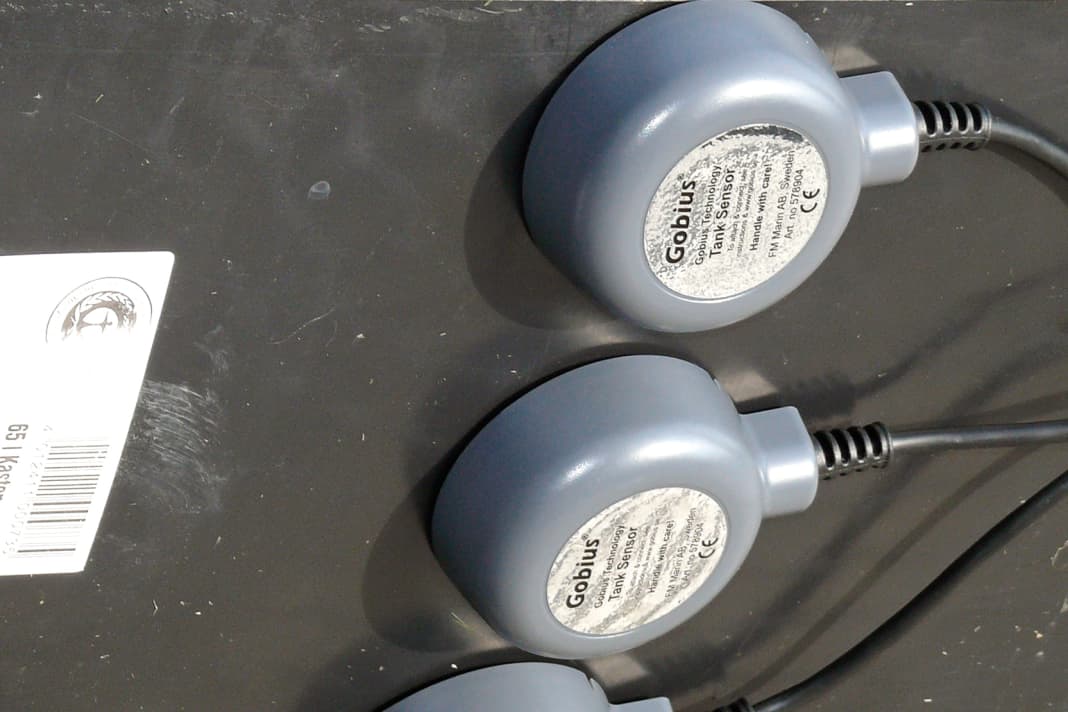


An ultrasonic measurement can be imagined as an echo sounder. The sensor emits sound waves and receives their echoes. The fill level can be determined from the time between the transmission of the pulse and the reception of the reflected echo. Non-contact level measurement does not require any moving parts in the tank that can become dirty or damaged by force. This makes it particularly suitable for measuring in sewage tanks, but it can also be used for fresh water and fuel tanks. The transducer must be programmed for the size, design and type of liquid. Some ultrasonic transducers are not suitable for metal tanks. The great advantage of ultrasonic sensors is that they are practically maintenance-free, which is particularly advantageous for faeces tanks.
Transmitter and display must match. There are differences between European and US models
It is also important to note that the sensor and the display must be matched to each other. There are differences between the European tank transducers (0-190 Ohm or 10-180 Ohm) and US displays (240-30 Ohm), where different resistances are used. In order to integrate the transducer data into modern NMEA 2000 networks and to show the measurement data on a display, there are adapters that convert the analogue signals into an NMEA 2000 signal.
Such "AD converters" must be suitable for the respective system; if in doubt, a look at the manufacturer's specifications or the operating instructions will help.

